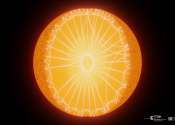Arecibo Observatory telescope outfitted with a wideband cryogenic system to expand its capabilities
Constructed within a natural sinkhole in Puerto Rico, the 305-meter-wide Arecibo Telescope played a part in numerous discoveries, including the first detection of an exoplanet. It was the largest radio telescope in the United ...









